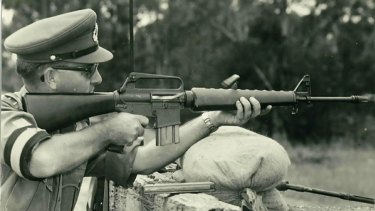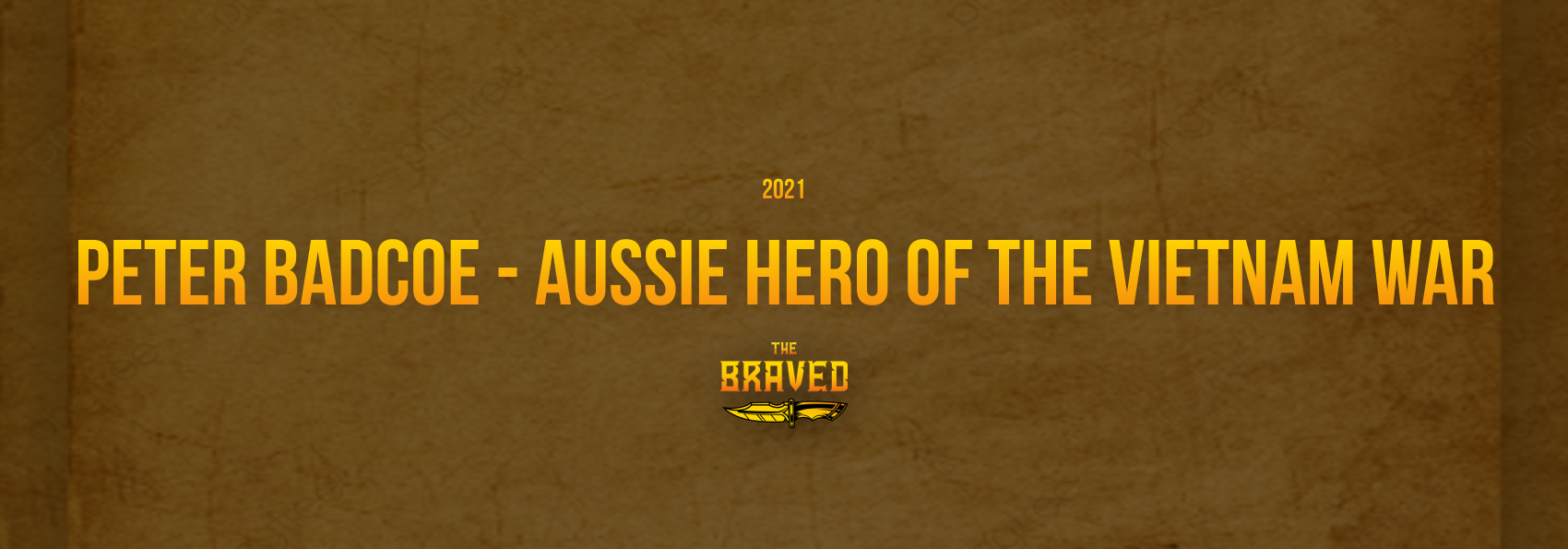Peter Badcoe was a quiet, stocky Australian and a legend of the Vietnam War. For his comrades, he was willing to risk life and limb. But eventually, death catches up with us all.

Badcoe in the Australian Army
Peter’s mother gave birth to him on the 11th of January 1934 in Adelaide, South Australia. At this time, Peter’s surname was not, in fact, Badcoe, but Badcock. In 1961, Peter and his wife, Denise, decided their family would fare better without the “cock.” Getting back to young Peter Badcoe, he enlisted for the Australian Regular Army on the 10th of June 1950, at 16. After graduating from the Officer Cadet School in Portsea Victoria, the Royal Australian Artillery (RAA) took him on.
At 17, Badcoe married Denise; they had three daughters throughout their time together. Badcoe was very much a family man. According to an article by Ian McNeill, published in the Australian Dictionary of Biography in 1993, Badcoe was a gentleman who often confided in his wife. He didn’t drink, and he didn’t smoke. He wore glasses and read often especially military books. With that said, Badcoe approached war with utmost zeal and physicality.
By June 1961, he served as a battery captain of the 103rd Medium Battery, an artillery battery unit formed during the Great War. The 103rd fought in the Malayan Emergency alongside the British.
Following a brief stint in Vietnam in the 7th Division of the Army of the Republic of Vietnam, Badcoe returned to the RAA and then transferred to the Royal Australian Infantry Corps. He spent some time in Australia but was eager to get back into the action. He applied for Australian Army Training Team Vietnam, attended some intelligence and jungle combat training, and arrived in Vietnam in August 1966 as a provisional major.
What Badcoe didn’t know was that death was waiting for him there.

Badcoe in the Vietnam War
In the Nam Hóa District of South Vietnam, Badcoe worked as an advisor to a South Vietnamese Regional Forces company. He donned a maroon beret and quickly proved himself as a fearless and capable warrior, despite how he may have presented himself away from the battlefield. Shortly after his arrival, Badcoe doused a Viet Cong bunker with petrol from two jerrycans and then set it alight with a white phosphorous grenade. One of Badcoe’s comrades, Chris Black, provided an excellent description of the major:
“[Badcoe’s] drab jungle greens were almost hidden under the most amazing collection of weapons I have ever seen on one man. A Swedish submachine gun, his favourite, hung over one shoulder. It was balanced on the other side by a snub-nosed grenade launcher. On his belt, an Australian pistol hung heavily, and in one hand, he hefts an American machine gun.”
Badcoe also earned the nickname “The Galloping Major,” a nod to his enthusiasm in war. Though, after witnessing a napalm strike that hit the civilians of a village as well as the Viet Cong occupying it, Badcoe began to second-guess Australia’s involvement in the war. On the 7th of April 1967, he wrote to Denise one last time. It read, in part, as follows:
“It’s time I came home. I can see more and more good about the Vietnamese and less and less about the US advisers.”

The sacrifice of Peter Badcoe
While Badcoe’s Victoria Cross citation noted three separate actions (the first in February 1967, the second in March, and the third in April), the third action saw the award presented to Denise instead of her husband. On the 23rd of February, Badcoe ran across a fire-swept battlefield for 600 meters to attend to a wounded advisor. On the 7th of March, he led his company over an open battlefield and stopped the Viet Cong from capturing the Quảng Điền District’s HQ. Then, on the 7th of April, the same day he wrote that letter, Badcoe’s company was under heavy small arms and mortar fire and were unable to advance. Badcoe, a leader to the bitter end, stormed ahead of the company. As he was about to throw a grenade into the midst of his enemies, they cut him down with a burst of machine-gun fire.
Death claimed him then and there.
The Governer-General of Australia presented Denise with Peter’s Victoria Cross on the 5th of April the following year. He also received a posthumous Purple Heart and Silver Star, among other awards. Peter Badcoe was one of four Australians who received the Victoria Cross for their bravery and sacrifice in the Vietnam War.
